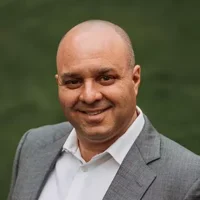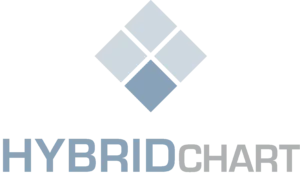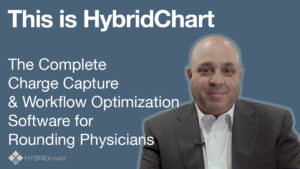Does it feel like you are – quite literally – buried under mountains of paperwork these days?
You’re not alone: Despite the “epic” (with a small AND capital e) evolution of electronic medical records, you’re still eyeball-deep in the kinds of administrative and menial tasks that keep you from pursuing your passion – healing patients!
A recent survey found that physicians like you are spending almost 16 hours per week on logging, reporting, organizing, and filing tasks! In fact, 70 percent of doctors who responded to the survey are spending more than 10 hours a week on paperwork – that’s up from just about a third in 2014.
And for every bold technological step forward in medical data analytics – offering the promise of less headaches and more patient time — there remain some processes that are rooted in the days of pencil-and-paper. Take, for example, the tasks of hospital charge capture and census management. Every patient movement within the hospital setting must be noted and tracked – and recorded in a way that eliminates duplicative workflow.
It’s little wonder that medical providers have been faced with the harsh reality of reduced time with direct patient care. Particularly with hospital rounding and charge capture, the technological transition has been far too gradual. Sure, it’s a complex process, with documentation and clerical requirements that ensure you get paid for your work.
As a result, any best practices approach to a hospital charge capture solution would need to meet the moment – answering the rigorous requirements of the process, and truly moving the needle as measured in more time for clinical decision-making or face-to-face interaction.
Rounding at Hand
A purpose-built solution – like the EVOLVE suite of hospital rounding and charge capture software – aims for the low-hanging fruit first. Rather than forcing doctors to tear down their entire process and rebuild – a disruption that is sure to lead to massive heartburn – you won’t miss a step by moving major aspects of your inpatient and outpatient workflows to a purpose-built mobile app.
For example, rather than hospital rounding existing as an inefficient free-for-all, you can remain in constant communication with your colleagues, so you’ll know precisely which patients need to be seen, which have already been seen, and when new business comes in.
I can’t count the wasted hours texting and calling. And don’t get me started on weekend sign-outs. In my practice, everything changed once we adopted charge capture and hospital rounding software. Suddenly, we were organized. Seeing the whole census and which patients had been rounded on, in real time, eliminated all of the excess communication. Weekend sign-outs became a breeze as well. Voila! Instant process improvement.
More Time for You
New efficiencies mean time gained. How should this time be spent? Though the natural instinct is to transfer it to leisure time. let’s not race home and get into comfy clothes every day. In the outpatient world, often the urge is to see more patients in a day.
Another approach that you might find attractive would be to purposefully extend the time slots for patient visits. This one is harder to do because there are external pressures on us to see more patients. Lengthening the visit slot, knowing you have carved out extra time, translates into that extra five minutes taking a history, doing a more detailed physical exam, or simply getting to know your patient better. In the hospital setting you will have more time per patient as well. Reviewing records, discussing cases with colleagues, going over imaging with radiologists – all of these are hard to do when you are pressed for time. The scalability of your whole practice may change as well.
Once you get a taste of process improvement, it is contagious. You start turning to other areas in your work environment and ask, “How can I streamline this?” This is great but be careful. Not every aspect of your practice is suffering from inefficiencies. Furthermore, some processes are harder to tear down without bringing your whole operation to a grinding halt.
Make sure there is a solution out there to replace the existing one, and make sure it has been proven to work – otherwise, you are creating as many problems as you are solving. Also, insist that all the stakeholders are present in the discussion. If you are going to change how patients are roomed in the office, the check-in staff, medical assistants, and check-out staff all need to be involved.
The ultimate goal in healthcare is to deliver the highest quality of care possible to patients at an affordable cost. Increasing demands on provider time have pushed the envelope of bare minimums. Process improvement is vital to the sustainability of medical practices. Creating a better balance between clinical time and clerical work will ensure that quality of care never suffers.
https://hybridchart.com/wp-content/uploads/2019/11/HC-Logo-Primary.png
For A Better Hospital Rounding Experience
At HybridChart, we provide technology that connects your healthcare team, increases efficiencies, AND improves your bottom line. HybridChart’s cloud-based software adapts to your practice’s unique workflow and will improve your profitability and patient outcomes by utilizing our 5 features: charge capture, census management, secure messaging, discharge planning, and data analytics.
NEVER miss another charge and get PAID for the work you do!
If you are interested in taking your medical practice to the next level and want to employ the best hospital charge capture practice available in the industry, come visit our website at www.hybridchart.com, call us at 1-877-977-5544, or click here to schedule a demo today!







